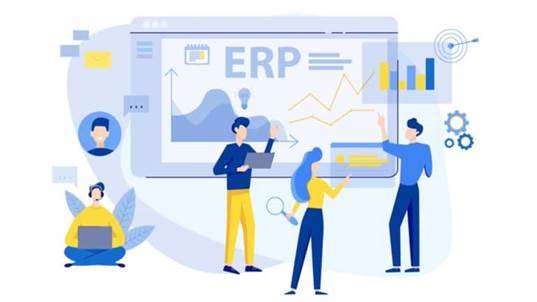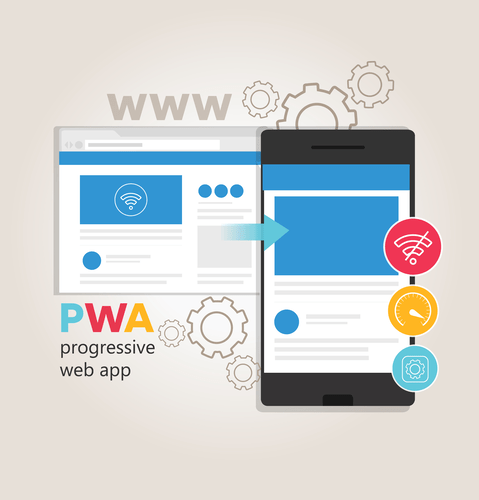Creating A Profitable Ai Enterprise Strategy: Eight Steps
After testing the AI model, it is time to incorporate it right into a relevant enterprise process or workflow. This could be something from a customer support platform to a product recommendation system, or even a knowledge evaluation course of – basically, wherever the model can add worth. Short-term goals may include improving operational effectivity, decreasing costs, or rising buyer satisfaction. Long-term objectives might be about gaining a aggressive edge, fostering innovation, or reworking your business model. The relentless development of know-how has pushed Artificial Intelligence (AI) from the realm of science fiction into the boardrooms of world companies.
Note that the opportunity is clearly articulated, and the activity roadmap has simple steps that construct upon previous capabilities and are designed to achieve the use case aims. Also captured on the template are the AI techniques concerned – essential data for the IT division – and the danger profile of the use case. Finally, success is most likely when corporations create a practical, incremental roadmap for implementation that allows them to build on earlier successes. We recommend a 3-5 yr roadmap that lays out priorities for the instant, medium- and long-term in addition to the sequence and length of builds. Companies may choose to build this infrastructure in-house, purchase it all in the cloud or choose a hybrid of the 2.

For example, a producing company might excel at utilizing AI for predictive upkeep, while a high-volume financial transaction firm may be AI-advanced in deploying chat bots to service prospects. On the flip side, sales, marketing or human assets may be lagging in terms of AI maturity in such firms. The same differentiation of maturity and adoption throughout functions exists with other applied sciences, such as ERP, CRM and mobile. After maturing the primary function, the assist features should come along as the group grows, scales up and standardizes its processes. Implementing AI strategically requires a complete strategy that goes beyond simply know-how.
Building An Innovative Tech Startup From Scratch Using Lean Methodology
Recent developments within artificial intelligence (AI) have demonstrated the scale and energy of this know-how on business and society. However, businesses need to determine tips on how to construction and govern these techniques responsibly to keep away from bias and errors because the scalability of AI expertise can have expensive effects to both business and society. Building an AI technique presents many benefits to organizations venturing into artificial intelligence integration. An AI technique permits organizations to purposefully harness AI capabilities and align AI initiatives with general enterprise goals.

The first step is, of course, figuring out issues you can solve by utilizing Artificial Intelligence. Evaluate your organization’s processes, workflows, and information, and pinpoint areas with clear-cut knowledge and present know-how that may simply transition to AI. You may even conduct a coaching needs evaluation if you uncover that some of the problems reside in your L&D program to dive deeper. Starting with simpler, extra achievable goals helps you dip your toes into the already complicated expertise of AI. Specifically, being in a position to measure the results of your AI project in a short amount of time allows you to simply gauge ROI and make changes with out placing an enormous dent in your budget. Once you get the grasp of it, you can transfer on to goals with an extended implementation schedule.
Common Challenges Of Ai Enterprise Strategy Planning
Before diving in, it’s vital to conceptualize how your AI solution will be brought to market, as nicely as how you will measure its success as quickly as it’s out on the planet. Of all a company’s features, advertising has perhaps probably the most to realize from synthetic intelligence. Marketing’s core actions are understanding buyer needs, matching them to products and services, and persuading individuals to buy—capabilities that AI can dramatically enhance.
- A well-formulated AI technique must also help guide tech infrastructure, guaranteeing the business is equipped with the hardware, software program and different resources wanted for effective AI implementation.
- Businesses are more and more recognizing the potential of AI to streamline operations, improve buyer experiences, and achieve aggressive benefits.
- We’ll be taking a look at how companies can create an AI implementation strategy, what are the key concerns, why adopting AI is essential, and far more in this article.
- This places additional pressure and urgency on companies, as consumers and b2b companions count on firms to offer them with the kind of expertise that retains up with what they encounter in their on a regular basis lives.
- The same differentiation of maturity and adoption across capabilities exists with other technologies, corresponding to ERP, CRM and cellular.
For product management suggestions, take a look at Mayank’s guide, The Art of Building Great Products. I’ve lined the what, why, and how of AI implementation, however a wealth of ethical and authorized issues fall outdoors the scope of this collection. Self-driving vehicles, sensible medical units, and instruments will ai conduct companies building ai corresponding to Dall-E 2 and ChatGPT are poised to problem long-held assumptions about human thought, labor, and creativity. Learn from the proof, go back to the drafting board, and add and modify features. Enable industry-specific compliance practices and establish a fail-safe mechanism that kicks in when the model doesn’t behave as anticipated.
He famous that AI proficiency with unstructured data opens new avenues for data utilization that traditional data administration methods may not absolutely exploit. Defining the use case starts with ideation, often via workshops with customers, to get clarity on the precise enterprise alternative the company hopes to seize by way of the use of AI. Next, with the use case in mind, leaders should decide the expected business benefits of the use case and prototype an answer to show these benefits, and assess the influence on present processes. Businesses want an AI technique as a result of investing in AI technologies may be an costly, dangerous, and time-consuming practice.
Step Four: The Three Pillars: Information, Algorithms, And Infrastructure
The AI technique turns into the compass for significant contributions to the organization’s success. It empowers stakeholders to choose on initiatives that can supply the largest improvement in important processes such as productiveness and decision-making as properly as the bottom line. AI strategy is a part of a company’s general progress strategy – AI implementations have to be directly linked to creating business value, to not enhancing expertise capabilities.

Businesses are more and more recognizing the potential of AI to streamline operations, improve customer experiences, and gain competitive advantages. AI applied sciences provide options for duties starting from information analysis to customer service, making them extremely priceless in today’s fast-paced business surroundings. AI business methods must be custom-fitted to your group, although the steps lined above present a useful framework for getting began. Ultimately, you know what your business’s weaknesses are and what areas can most profit from AI adoption.
Step 2: Assess Your Data Readiness
Regularly reviewing how AI techniques are performing is critical to make sure they are delivering what is expected of them. Likewise, monitoring also helps to identify any issues or biases within the AI models in order that these could be evaluated and the techniques could be improved. However, generative AI (Gen AI) investments continue to surge, early adoption might end in challenges such as fears over privateness, security, AI regulation and inner abilities gaps. Creating a clear and strong AI strategy is important for organisations to deliver actual innovation, which is able to lead to continued progress. AI is forcing middle-market companies to improve their digital transformation efforts.
This may also involve extending the information sources and refining the models to deal with more complicated or diversified use cases. Building a multidisciplinary staff ensures that every one aspects of the AI implementation are addressed, from the technical to the moral, and from the data to the consumer expertise. It’s a vital step towards making certain the profitable implementation and integration of AI in your business. To successfully implement AI in your corporation, begin by defining clear goals aligned along with your strategic goals.

Some key factors for consideration are fairness, transparency, accountability and privateness, which can help to mitigate danger and construct trust amongst a company’s stakeholders. With well-designed workflows that are able to enable people and AI systems to collaborate based mostly on every other’s strengths, a company can improve productiveness and innovation. It can strongly profit a business if humans and AI work in tandem to realize business outcomes. By collaborating, a company can achieve tasks and targets that may not have otherwise been achieved – or it might have taken much longer to succeed. By testing AI technology, companies can understand its strengths and limitations and tips on how to use it responsibly and ethically.
We mentioned earlier that your probabilities of a profitable transition into AI turn into considerably greater when you start from simply achievable goals. Research has shown that almost half of AI tasks by no means go past the prototype stage and into production. This could be because the initial idea was too ambitious and the tools for its mass production are too difficult or have not but been created. Although the pace with which expertise evolves permits us to dream bigger, it’s essential to operate inside our means, no much less than during our first steps.

“Implementing AI strategies does not name for a complete change of paradigm – it follows fundamental enterprise ideas that apply to most development or efficiency initiatives,” says Cherry Bekaert’s Schwartz. Cherry Bekaert’s Schwartz additionally pointed to the potential of AI in engineering and design, by making use of simulation and digital twins to create machines and structures that will be sound from the danger management standpoint. Below is a sample use case template for ABC LifeCo that displays the steps mentioned above.
The post-hand-sanitizer era referred to as for a model new method to operational effectivity, market research and product innovation. Part of the hesitation when embarking on data-driven AI applications are the misgivings that CEOs have about the quality of information. During the roundtable, CEOs discussed information silos, inconsistent formats and total knowledge integrity. Data-related issues, such as quality and availability of information and data management ranked high on the listing of top obstacles to AI implementation. (See Chart 1.) While stressing the necessity for long-term strategic planning in information administration, Cherry Bekaert’s Gallardo additionally advocated for doubtlessly using AI to deal with unstructured data.
This includes your knowledge storage methods, business purposes, and other relevant techniques. The customer validation section will furnish a data-backed analysis that may let you know whether to invest more time in specific app features. In this example, you identify the product should be marketed to journey brokers in tier 2 cities who will promote deals on unsold seats. If all goes nicely, you plan to scale the product by offering it to competitor airlines.
When the mannequin doesn’t carry out nicely, it’s normally due to variance, bias, or both. Prejudicial bias in buyer information derives from interpretations of factors similar to gender, race, and site. Removing human preconceptions from the information and applying techniques similar to regularization can improve these points.

No wonder a 2018 McKinsey evaluation of more than four hundred superior use cases showed that advertising was the area where AI would contribute the best worth. Executive buy-in refers to an settlement from a company’s executives and management to support or spend cash on a project. Ultimately, it’s beneficial that enterprise AI initiatives ought to have the endorsement of senior management to have the ability to secure funding for essential resources to develop the technology safely and successfully.



